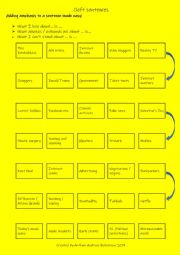
|
Adding emphasis to your opinion
Using cleft sentences to add emphasis to your ideas / thoughts. All the topics / themes are of current interest to stimulate conversation.To help develop conversational skills for B1 students, get the students to give examples to support their opinions.
Suitable for both pairwork and small groups.
Level: intermediate
Age: 14-100
Type: worksheet
Downloads: 273
|
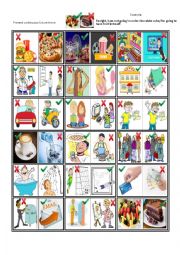
|
Present Continuous Future Tense. Correct the planned actions.
An enjoyable speaking and writing supplement to reinforce asking questions, answering using both affirmative and negative sentences. To get a mixture of both oral and written work I normally have something small enough to hide in my hand. If the object is in the hand not selected, they have to write the sentence. To encourage students, I usually gi...
Level: elementary
Age: 9-100
Type: worksheet
Downloads: 271
|
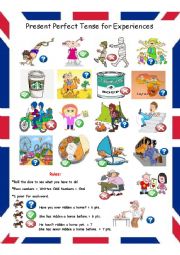
|
Present Perfect Tense for Experiences
An enjoyable speaking and writing supplement to reinforce asking questions, answering using both affirmative and negative sentences. To get a mixture of both oral and written work I normally have something small enough to hide in my hand. If the object is in the hand not selected, they have to write the sentence. To encourage students, I usually gi...
Level: elementary
Age: 9-100
Type: activity-card
Downloads: 271
|
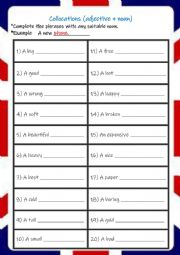
|
Adjective noun collocation
Students write a short sentence using a suitable noun to form a common collocation. As a class activity students get one point for writing a suitable noun and two points for writing a noun different to their classmates. This worksheet is suitable for A1-A2 students.
Level: elementary
Age: 8-100
Type:
Downloads: 270
|
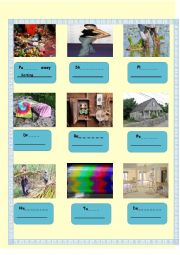
|
What needs to be done? Part 2 of 5
Students to complete the verb then make sentences (oral or written) using need/s + verb ing for each picture. For higher level students where possible they think of another suitable synonym which could also be used. See example on first picture.
Level: elementary
Age: 9-100
Type: activity-card
Downloads: 266
|
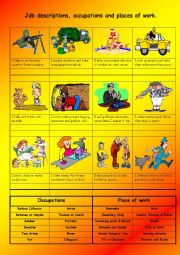
|
Job descriptions, occupations and paces of work
Students to read the descriptions then write the occupation and normal place of work using the given vocabulary at the bottom of the page. Part 4 of 4
Level: elementary
Age: 6-12
Type: worksheet
Downloads: 266
|
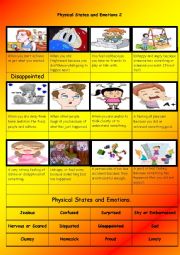
|
Physical States and Emotions Part 2 of 4
Students read the physical state or emotion description then match it to the correct feeling. Part 2 of 2.
Level: elementary
Age: 8-100
Type: worksheet
Downloads: 264
|
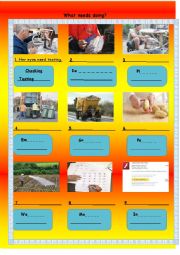
|
What needs doing? Part 5 of 5
Students to complete the verb then make sentences (oral or written) using need/s + verb ing for each picture. For higher level students where possible they think of another suitable synonym which could also be used. See example on first picture.
Answer key included.
Level: elementary
Age: 9-100
Type: activity-card
Downloads: 262
|
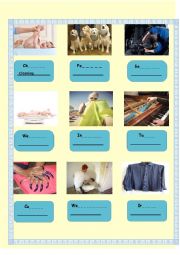
|
What needs to be done? Part 4 of 5
Students to complete the verb then make sentences (oral or written) using need/s + verb ing for each picture. For higher level students where possible they think of another suitable synonym which could also be used. See example on first picture.
Level: elementary
Age: 9-100
Type: activity-card
Downloads: 261
|
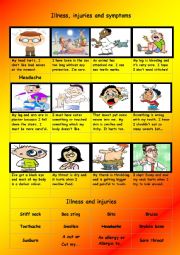
|
Illness, injuries and symptoms
Students to read the symptoms and match the problem to its medical term / condition Part 2 of 2
Level: elementary
Age: 8-100
Type: worksheet
Downloads: 261
|












